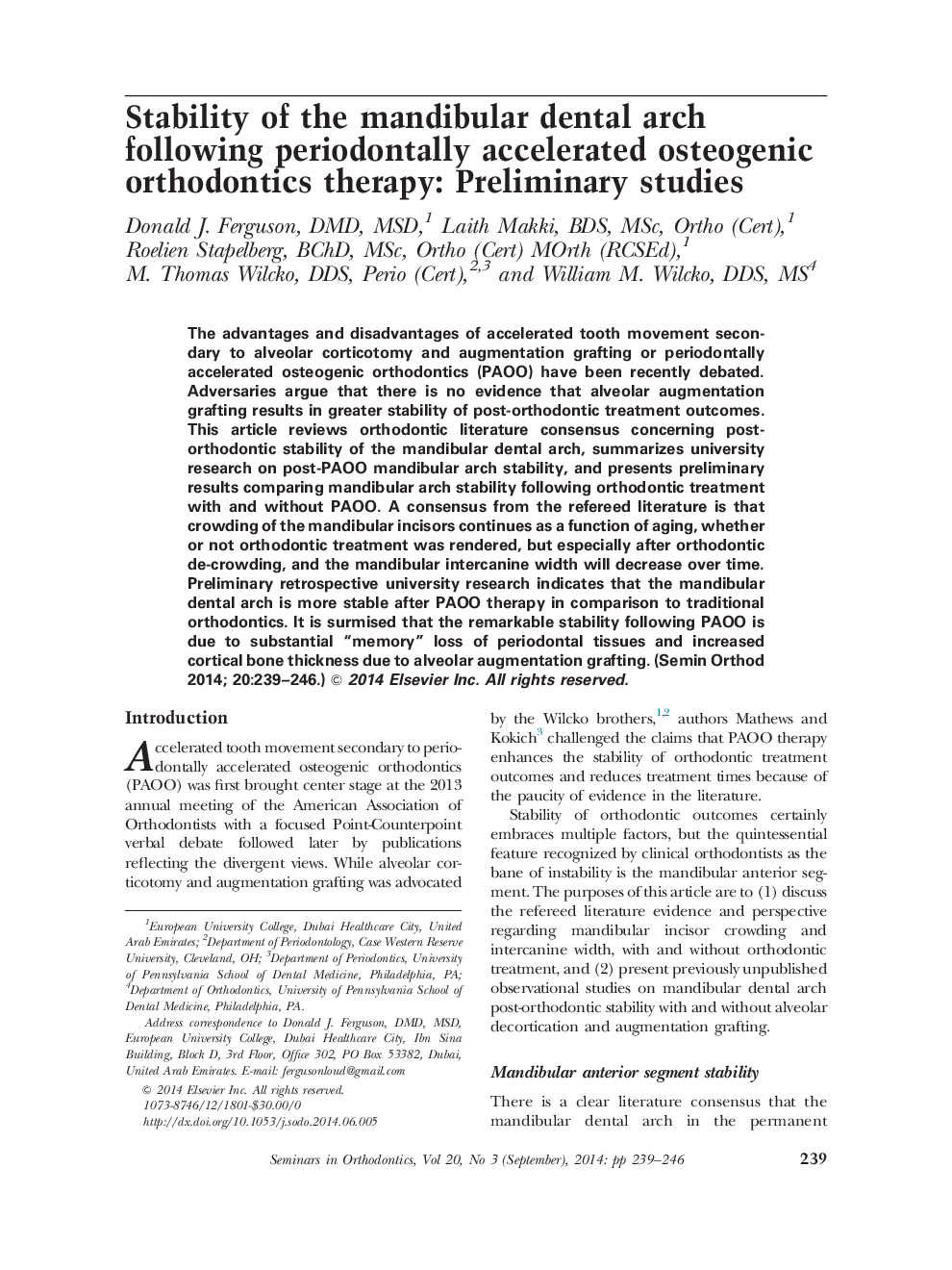| Article ID | Journal | Published Year | Pages | File Type |
|---|---|---|---|---|
| 3175405 | Seminars in Orthodontics | 2014 | 8 Pages |
The advantages and disadvantages of accelerated tooth movement secondary to alveolar corticotomy and augmentation grafting or periodontally accelerated osteogenic orthodontics (PAOO) have been recently debated. Adversaries argue that there is no evidence that alveolar augmentation grafting results in greater stability of post-orthodontic treatment outcomes. This article reviews orthodontic literature consensus concerning post-orthodontic stability of the mandibular dental arch, summarizes university research on post-PAOO mandibular arch stability, and presents preliminary results comparing mandibular arch stability following orthodontic treatment with and without PAOO. A consensus from the refereed literature is that crowding of the mandibular incisors continues as a function of aging, whether or not orthodontic treatment was rendered, but especially after orthodontic de-crowding, and the mandibular intercanine width will decrease over time. Preliminary retrospective university research indicates that the mandibular dental arch is more stable after PAOO therapy in comparison to traditional orthodontics. It is surmised that the remarkable stability following PAOO is due to substantial “memory” loss of periodontal tissues and increased cortical bone thickness due to alveolar augmentation grafting.
